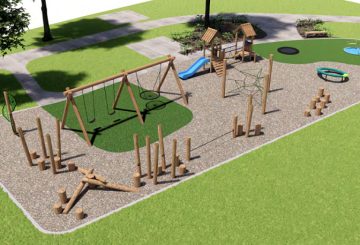오세아니아에서 열린 첫 번째 Beyond COP21 심포지엄은 젊은이들이 보다 지속 가능한 미래를 상상하도록 영감을 주는 것을 목표로 합니다.타라나키의 그린 스쿨은 파리 기후 협정 및 유엔 지속 가능성 개발 목표와 관련된 토론, 워크숍 및 프레젠테이션에 참여할 전국 150명의 중고등학생을 환영합니다.
에듀케이션 인 모션 (Education in Motion) 의 지속가능성 및 세계시민의식 책임자인 다르시 룬 (D’Arcy Lunn) 은 이번 행사가 상황을 개선하기 위한 노력을 장려하기 위한 것이라고 말했습니다.그는 아이디어를 전 세계에 긍정적인 영향을 줄 수 있는 젊은이들의 능력에 감탄을 표했습니다.
Lunn은 젊은 참석자들이 평생 네트워크를 형성하기를 희망합니다.그는 이번 행사가 세상을 바꾸는 즉각적인 계획을 고안하기 위한 것이 아니라 지역 사회를 변화시키는 데 열린 태도를 보이겠다는 결의를 키우는 데 초점을 맞췄다고 강조했습니다.
Beyond COP21 심포지엄은 2016년 두바이에서 처음 개최되었으며 이후 유럽, 아시아, 아프리카, 북미 및 남미에서 개최되었습니다.그린 스쿨 연사로는 녹색당 공동 지도자인 클로이 스와브릭, 인도네시아의 기후 운동가 멜라티 위센, 카이의 회복력을 지지하는 타라나키와 마타우랑가 마오리인 포나무 스켈톤이 참석했다.
학생들은 이번 행사에 대한 기대감을 드러냈고, 많은 학생들이 워크숍과 같은 생각을 가진 친구들과 교류할 수 있는 기회를 고대하고 있었습니다.또한 나이가 들어도 실천할 수 있도록 어릴 때부터 지속 가능성에 대해 생각하기 시작하는 것이 중요하다고 강조했습니다.
스트랫퍼드 초등학교의 환경 코디네이터인 말린 루이스 (Marlene Lewis) 는 이번 심포지엄이 학생들에게 환상적인 기회였다고 말했다.그녀는 전 세계 개개인이 기후 변화와 지구 온난화에 대처하는 데 변화를 가져올 수 있다고 믿습니다.



























































